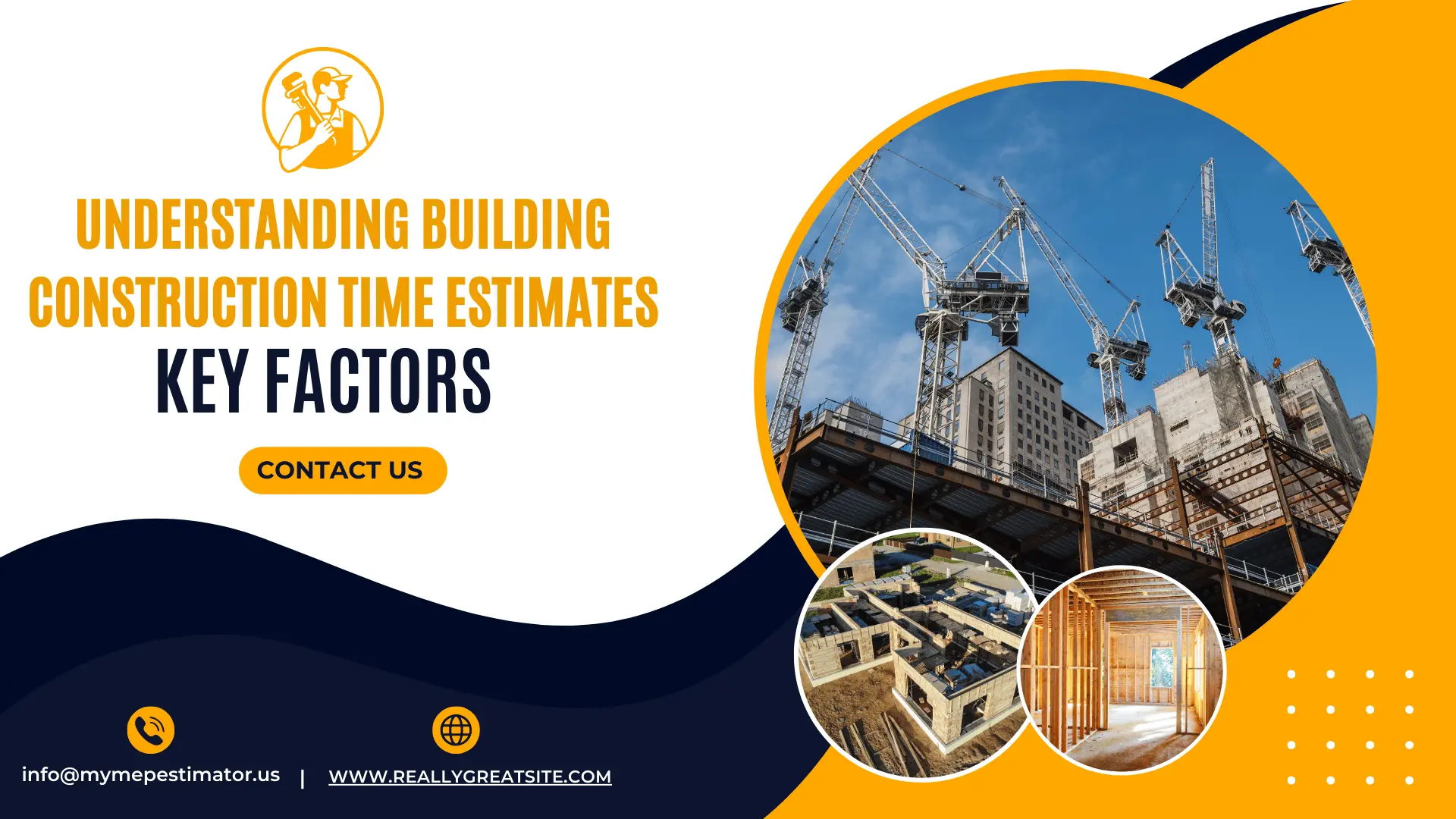
Introduction to MEP Estimating
In the construction industry, precise cost estimation is crucial for the success of any project. Among the various roles involved in this process, an MEP estimator holds a significant place. MEP, which stands for Mechanical, Electrical, and Plumbing, encompasses some of the most critical systems in a building. The role of an MEP estimator is to provide accurate cost estimations for these systems, ensuring that the project remains within budget and on schedule. This article explores the responsibilities, processes, and tools utilized by MEP estimators, highlighting their importance in the construction industry.
Understanding the Role of an MEP Estimator
An MEP estimator is responsible for estimating the costs associated with the mechanical, electrical, and plumbing components of a construction project. These systems are integral to the functionality of any building, encompassing everything from HVAC (Heating, Ventilation, and Air Conditioning) systems to electrical wiring, lighting, and plumbing. The MEP estimator’s job is to provide detailed and accurate cost estimates for these systems, ensuring that all aspects are covered before the construction process begins.
Key Responsibilities
- Cost Estimation: The primary responsibility of an MEP estimator is to calculate the costs involved in installing and maintaining the MEP systems in a construction project. This includes considering the cost of materials, labor, equipment, and any other factors that could impact the overall budget.
- Project Scope Analysis: Before any estimation begins, an MEP estimator must thoroughly understand the project scope. This involves analyzing architectural plans, engineering designs, and specifications to determine the exact requirements for the MEP systems.
- Quantity Takeoff: MEP estimators perform a quantity takeoff, which involves calculating the quantities of materials and labor needed for the project. This process is critical for ensuring that all necessary components are included in the cost estimate.
- Estimation Software Utilization: MEP estimators often use specialized estimation software to enhance accuracy and efficiency. Tools like digital takeoff software allow them to automate parts of the estimation process, reducing the risk of human error and speeding up the process.
- Collaboration with MEP Engineers and Contractors: MEP estimators work closely with MEP engineers and contractors to ensure that the estimates are realistic and achievable. This collaboration is essential for maintaining the integrity of the project and avoiding costly overruns.
- Project Budgeting: An MEP estimator also plays a role in project budgeting, helping to ensure that the project stays within financial constraints. They provide detailed estimates that allow for better budget management and informed decision-making throughout the project.
- Bidding Process Support: Accurate cost estimates are crucial during the bidding process. MEP estimators provide the necessary data to support competitive bids, helping contractors win projects while ensuring profitability.
The Estimation Process
The process of MEP estimation is methodical and involves several key steps to ensure accuracy and reliability.
1. Project Scope and Data Gathering
The first step in MEP estimation is to gather all relevant data and understand the project scope. This involves reviewing blueprints, specifications, and other documents to identify the MEP systems’ requirements. Estimators must consider factors such as the size of the building, the complexity of the systems, and any unique project demands.
2. Quantity Takeoff
Next, the estimator performs a quantity takeoff, calculating the exact quantities of materials and labor needed. This step is critical for ensuring that all necessary components are included in the estimate. Digital takeoff software is often used in this stage to improve accuracy and efficiency.
3. Cost Calculation
Once the quantities are determined, the MEP estimator calculates the costs associated with each component. This includes material costs, labor costs, equipment expenses, and any additional fees that may apply. The estimator must consider current market rates and historical data to provide an accurate estimate.
4. Risk Assessment and Contingency Planning
An essential part of the estimation process is assessing potential risks and planning for contingencies. MEP estimators must account for uncertainties that could impact the project’s costs, such as fluctuating material prices, labor shortages, or unexpected project delays.
5. Final Estimate Review
Before submitting the final estimate, the MEP estimator conducts a thorough review to ensure accuracy. This involves cross-checking all calculations, verifying that all components are included, and making any necessary adjustments. The final estimate is then presented in a detailed report, often accompanied by visual aids such as charts or diagrams.
The Importance of Accuracy in MEP Estimation
Accuracy is paramount in MEP estimation. Inaccurate estimates can lead to significant issues down the line, including budget overruns, project delays, and even structural failures. The use of estimation software, coupled with the estimator’s expertise, helps to ensure that the estimates are as precise as possible. This accuracy not only benefits the project at hand but also contributes to the overall success of the construction company by improving the win-bid ratio and client satisfaction.
Impact on Project Management
Accurate MEP estimates are crucial for effective project management. They provide a clear financial roadmap for the project, allowing for better planning, scheduling, and resource allocation. With reliable estimates, project managers can make informed decisions that keep the project on track and within budget.
Energy Efficiency and Sustainability
In modern construction, energy efficiency and sustainability are becoming increasingly important. MEP estimators must consider these factors when providing cost estimates, particularly for HVAC systems and electrical components. By incorporating energy-efficient technologies and sustainable practices into their estimates, MEP estimators help ensure that the project meets environmental standards and reduces long-term operating costs.
Relevant Statistics
Accuracy in Cost Estimation:
- According to a study by the Construction Industry Institute (CII), projects with accurate cost estimation have a 20% higher chance of being completed on time and within budget.
Impact of Estimation Errors:
- The American Society of Professional Estimators (ASPE) notes that errors in MEP cost estimation can lead to project cost overruns by as much as 10-15%, significantly affecting project profitability.
BIM and MEP Estimation:
- A report from McKinsey & Company highlights that the use of Building Information Modeling (BIM) can reduce project costs by up to 15% and increase the accuracy of MEP estimations by 30-40%.
Energy Efficiency and MEP Systems:
- The U.S. Department of Energy reports that integrating energy-efficient MEP systems can reduce a building’s energy consumption by up to 30%, underscoring the importance of accurate estimation in sustainable construction.
Construction Industry Data:
- Research by Dodge Data & Analytics shows that 72% of construction firms believe that accurate MEP estimation is critical to improving their bidding process and winning projects.
Tools and Technologies Used in MEP Estimation
MEP estimators rely on a variety of tools and technologies to perform their job efficiently and accurately.
1. Estimation Software
Estimation software is a critical tool for MEP estimators. These programs allow estimators to automate calculations, store historical data, and generate detailed reports. Popular software includes CostX, PlanSwift, and Bluebeam, which provide comprehensive solutions for digital takeoff and cost estimation.
2. Building Information Modeling (BIM)
BIM technology plays a significant role in modern MEP estimation. By creating a digital representation of the building, BIM allows estimators to visualize the MEP systems in 3D, identify potential issues early, and provide more accurate estimates.
3. Cost Databases
Cost databases, such as RSMeans, provide up-to-date pricing information for materials, labor, and equipment. MEP estimators use these databases to ensure that their estimates reflect current market conditions.
Skills and Qualifications of an MEP Estimator
An MEP estimator must possess a unique set of skills and qualifications to perform their job effectively.
1. Analytical Skills
MEP estimators must have strong analytical skills to interpret complex project data and provide accurate estimates. This includes the ability to analyze blueprints, specifications, and other technical documents.
2. Attention to Detail
Attention to detail is crucial for ensuring that all components of the MEP systems are accounted for in the estimate. Even a small oversight can lead to significant cost discrepancies.
3. Communication Skills
Effective communication is essential for an MEP estimator, as they must collaborate with engineers, contractors, and clients. Clear communication helps ensure that everyone involved in the project is on the same page and that the estimates are understood and accepted.
4. Technical Knowledge
A deep understanding of MEP systems and the construction industry is necessary for accurate estimation. MEP estimators must be familiar with the latest technologies, materials, and industry standards to provide reliable estimates.
Conclusion
The role of an MEP estimator is integral to the success of any construction project. By providing accurate and detailed cost estimates for mechanical, electrical, and plumbing systems, MEP estimators ensure that projects stay within budget and on schedule. Their expertise, combined with the use of advanced tools and technologies, makes them a valuable asset in the construction industry. Whether you’re a contractor, architect, or project manager, understanding the importance of MEP estimation can help you make informed decisions that lead to successful






